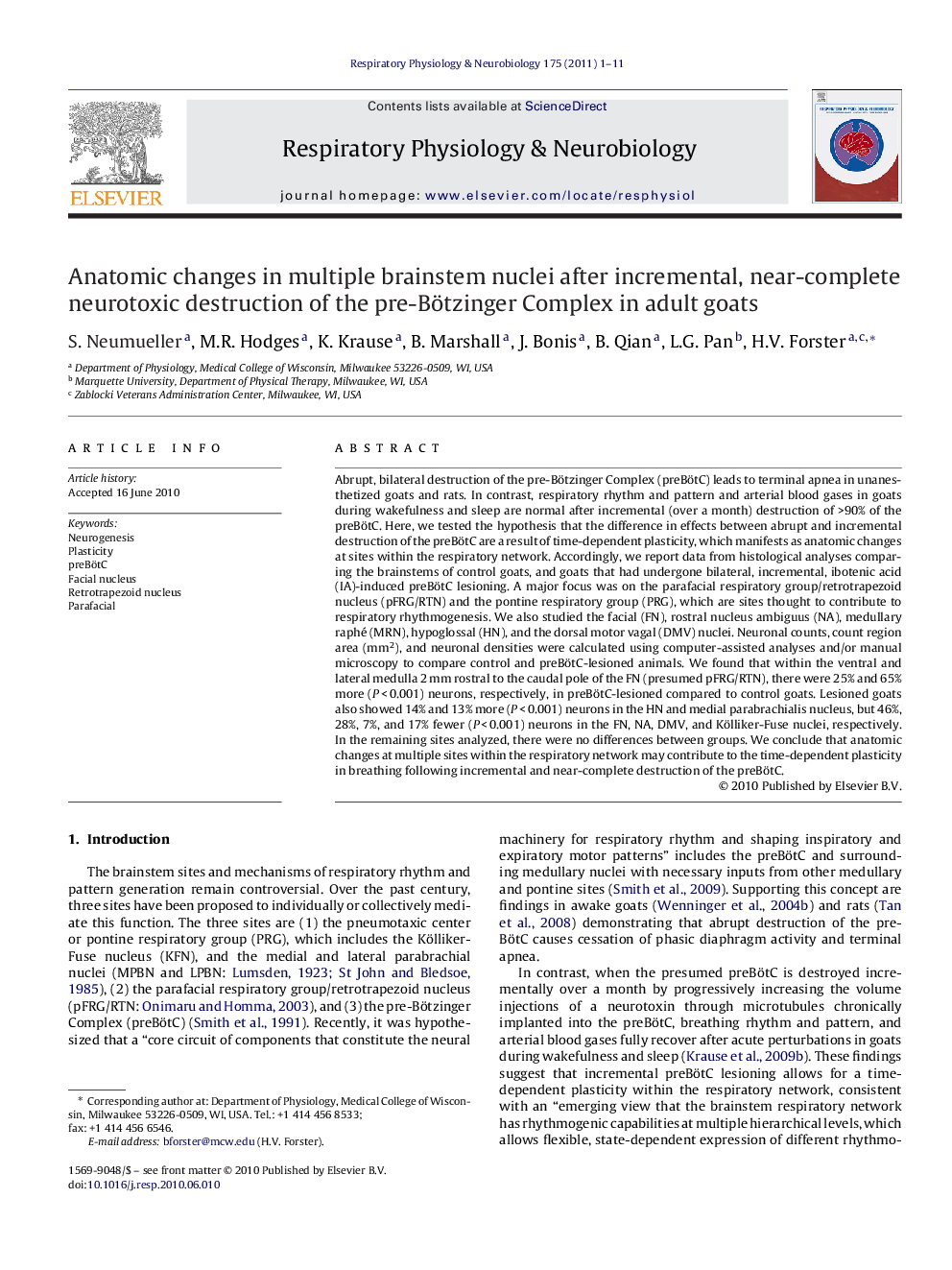| Article ID | Journal | Published Year | Pages | File Type |
|---|---|---|---|---|
| 5926553 | Respiratory Physiology & Neurobiology | 2011 | 11 Pages |
Abrupt, bilateral destruction of the pre-Bötzinger Complex (preBötC) leads to terminal apnea in unanesthetized goats and rats. In contrast, respiratory rhythm and pattern and arterial blood gases in goats during wakefulness and sleep are normal after incremental (over a month) destruction of >90% of the preBötC. Here, we tested the hypothesis that the difference in effects between abrupt and incremental destruction of the preBötC are a result of time-dependent plasticity, which manifests as anatomic changes at sites within the respiratory network. Accordingly, we report data from histological analyses comparing the brainstems of control goats, and goats that had undergone bilateral, incremental, ibotenic acid (IA)-induced preBötC lesioning. A major focus was on the parafacial respiratory group/retrotrapezoid nucleus (pFRG/RTN) and the pontine respiratory group (PRG), which are sites thought to contribute to respiratory rhythmogenesis. We also studied the facial (FN), rostral nucleus ambiguus (NA), medullary raphé (MRN), hypoglossal (HN), and the dorsal motor vagal (DMV) nuclei. Neuronal counts, count region area (mm2), and neuronal densities were calculated using computer-assisted analyses and/or manual microscopy to compare control and preBötC-lesioned animals. We found that within the ventral and lateral medulla 2Â mm rostral to the caudal pole of the FN (presumed pFRG/RTN), there were 25% and 65% more (PÂ <Â 0.001) neurons, respectively, in preBötC-lesioned compared to control goats. Lesioned goats also showed 14% and 13% more (PÂ <Â 0.001) neurons in the HN and medial parabrachialis nucleus, but 46%, 28%, 7%, and 17% fewer (PÂ <Â 0.001) neurons in the FN, NA, DMV, and Kölliker-Fuse nuclei, respectively. In the remaining sites analyzed, there were no differences between groups. We conclude that anatomic changes at multiple sites within the respiratory network may contribute to the time-dependent plasticity in breathing following incremental and near-complete destruction of the preBötC.
